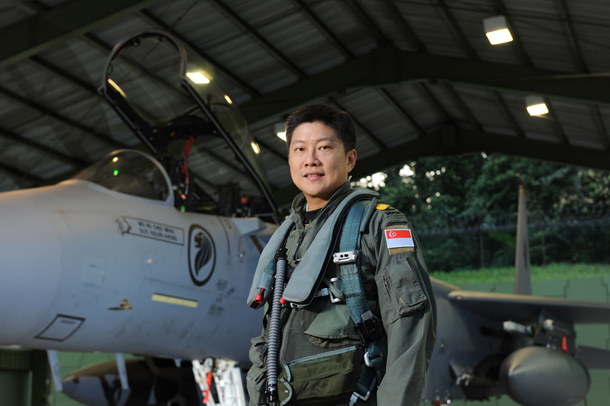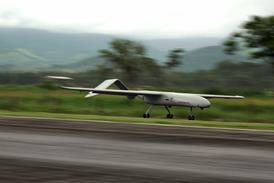Singapore is unique among major cities in that the full range of military aircraft can be spotted flying overhead on any given day. The country's small size and large air force make sightings of advanced types such as the Boeing F-15SG and Lockheed Martin F-16C/D commonplace. Indeed, the capabilities of few air forces are on such regular and public display. Keeping Southeast Asia's most powerful air force viable and preparing it for future missions falls to Republic of Singapore Air Force (RSAF) chief Maj Gen Ng Chee Meng.
"The RSAF's core mission is to safeguard Singapore's sovereignty by keeping our skies safe," says Ng, an air force veteran of 25 years and former Northrop F-5 pilot. "While our core mission remains unchanged, developments in the security landscape post [11 September 2001] as well as new technologies introduced have posed new challenges and opportunities that require the Singapore armed forces and the RSAF to transform to be more effective."
 |
|---|
He notes that Singapore's security environment has become increasingly more complex with the rise of non-conventional and non-traditional threats, namely transnational terrorism and natural disasters. "Close cooperation between various countries is required to effectively counter these threats," he said. "As such, we have participated in various multilateral initiatives and exercises aimed at enhancing security in the region."
The RSAF has undertaken several deployments beyond Singapore's borders. Along with Malaysia and Indonesia it patrols the Straits of Malacca, a crucial global choke point through which nearly half the world's trade flows. In 2010 the RSAF sent an unmanned air vehicle task group to Afghanistan. Sources said the unit comprised 52 personnel, four Israel Aerospace Industries (IAI) Searcher 2 unmanned air vehicles (UAVs) and ground-based elements. Based at Tarin Kowt in Uruzgan province, the unit performed reconnaissance on the roads around the base.
COUNTERING PIRACY
Another long-range RSAF deployment involved sending a Fokker 50 maritime patrol aircraft to the Gulf of Aden to support anti-piracy efforts. From April to July 2011, the aircraft conducted 58 sorties on behalf of Combined Task Force 151, an international force formed to counter piracy off the coast of Somalia. Singapore's Fokker 50 provided general situational awareness and helped to locate and investigate suspicious vessels.
"Our airmen have gained valuable experiences from such deployments and honed their capabilities as they operate in different and unfamiliar conditions," says Ng. "These missions are also a valuable opportunity for our airmen to benchmark themselves against our international partners while contributing meaningfully to international operations."
Ng adds that the RSAF has achieved "good progress" in its efforts to modernise the force. The most recent example of this is Exercise Forging Sabre, which the RSAF conducted in the US state of Arizona in December 2011 - Singapore lacks the land necessary for large-scale weapons exercises.
Forging Sabre saw the RSAF plan and execute integrated strike operations against a variety of targets under day and night conditions. Aircraft deployed included the F-15SG, the F-16C/D and Boeing AH-64D Apache Longbow attack helicopters.
The exercise validated the RSAF's ability to employ munitions such as the Boeing Joint Direct Attack Munition (JDAM) and Lockheed Martin AGM-114 Hellfire air-to-surface missile, says Ng. Forging Sabre also involved the service using F-15SGs to employ laser-guided JDAMs against several targets, including moving ones. In the coming year, says NG, one focus of the RSAF will be the operationalisation of acquisitions made last year, including the IAI Heron 1 UAV.
Ng says the RSAF's transformation to what it terms a "third-generation air force" continues. It has dropped an airbase-centric structure in favour of five operational commands: Air Combat; Air Defence & Operations; Air Power Generation; Participation; and UAV, plus Air Force Training command.
The new structure is intended to provide for increased operational tempo and to help the air force better assimilate new technology. "It also enhances the RSAF's integration with the army and navy, allowing the RSAF to contribute more decisively in the Singapore armed forces operations across the air, land and sea domains."
Source: Flight International























